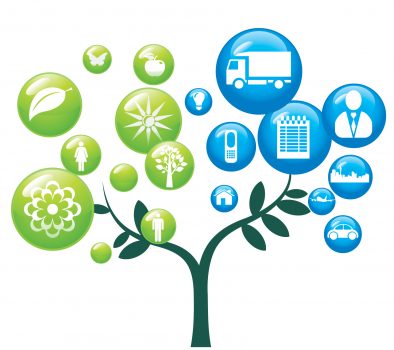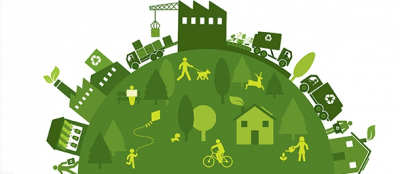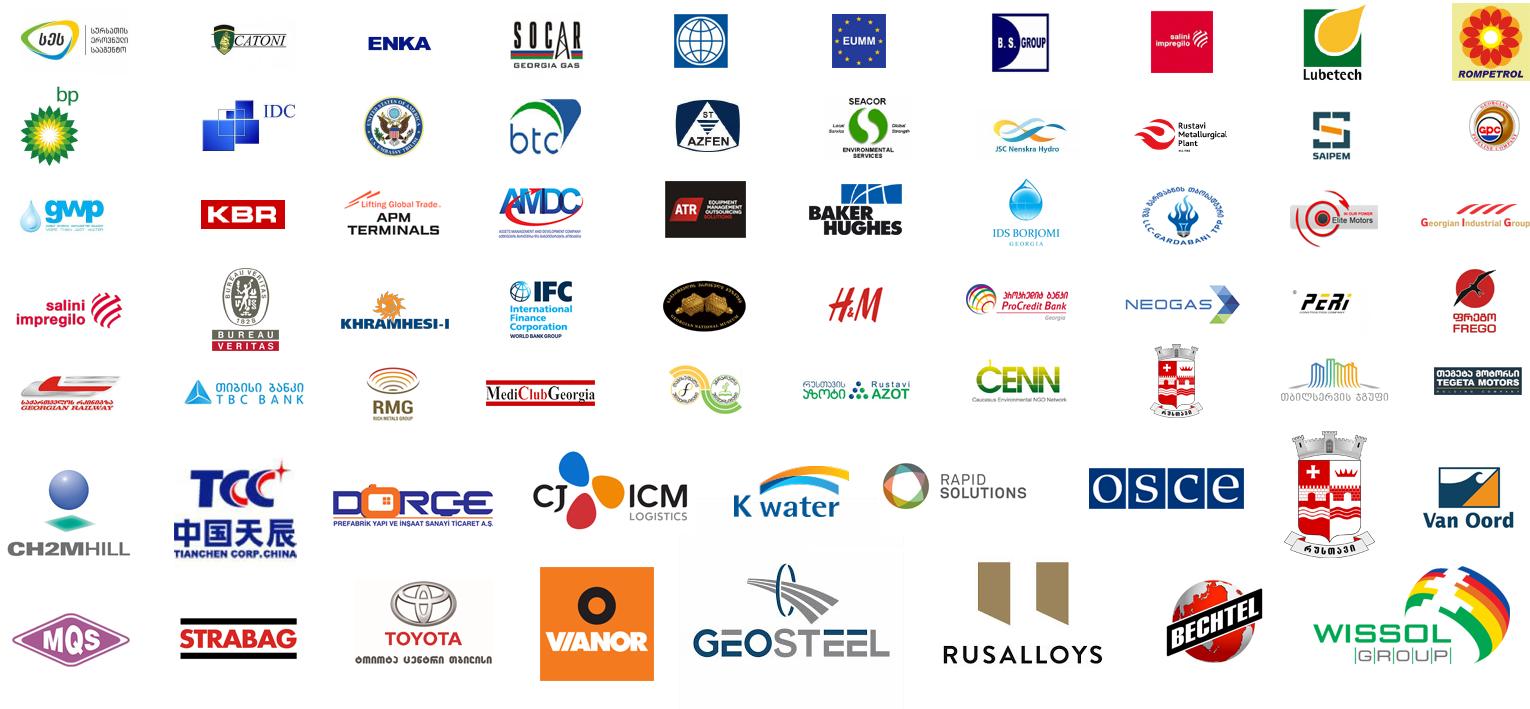Every week we read about a new study that explains how some environmental factor is affecting our health, or has found another danger in one of our household products or personal care items. Cancer has been linked to cleaning products, dementia to antiperspirants, a lack of nutrition to conventional farming, and asthma to air pollution. Why go green if not for your own health?
Understanding the Science That Shows the Environment Affecting Human Health

It’s difficult to watch the damage done to the environment affecting human health and not feel spurred to change. But many people still fail to see the correlation between our actions and its effects on us, due to denial or simple unawareness of our relationship with the natural world.
Over time our natural bodies have grown accustomed to living in a natural, organic environment. It has only been in the last century or so that we’ve experimented with living in such an inorganic world
Disease On The Rise
Although disease is by no means new (the first description of cancer was recorded in 1600 BC), the current rates of disease are increasing at alarming speeds and most are closely linked with known carcinogens that have become abundant in our environment in the last several decades (such as pesticides, artificial hormones, chemical cleaners, etc). The information below shows the conditions of the environment affecting human health in countless ways.
Some cancer rate statistics according to the Cancer Prevention Coalition:
Cancer incidence rates have risen an overall total of 60% from 1950-98, specifically:
- Non-Hodgkins lymphoma has increased nearly 100%
- Brain cancer up 80-90%
- Breast cancer up 60%
- Testicular cancer up 300%
- Childhood cancers up 40-50%
- 1 in 2 American men and 1 in 3 American woman will develop cancer in their lives
- Of the 1,400,000 Americans diagnosed with cancer, approximately 43% will not survive
Cancer rates are estimated to double by 2050

While cancer rates may be the most talked about, there are other more disturbing trends that all point to the environment affecting human health:
- Asthma increased 75% between 1980-1994; 150% in children. According to the EPA, this was also the timeframe when air pollution was increasing the most.
- Type 1 diabetes rates have doubled since the 1980’s; Type 2 diabetes rates doubled between the 1970’s and 1990’s
- Autism cases have increased an alarming 56% between 2002 and 2006 alone.
- Approximately 50 million people are affected by autoimmune diseases, with an estimated one in nine women affected in their lifetime.
- Infertility rates are expected to increase over the coming decades.
- Birth defects affect approximately 150,000 newborns annually. Of the 70% of unknown causes, most experts believe environmental issues are to blame.
- Of 413 chemicals tested for, 287 were found in the umbilical cord blood of newborn babies.
- In one study, various breastmilk samples showed the presence of pesticides, herbicides, household and industrial cleaners and more.
It’s obvious something it going on with our bodies as our cells mutate, break down or attack themselves and more and more of our natural world is contaminated with pollutants or toxins. Likewise, science has repeatedly shown that it is in fact our impact on the environment affecting human health with numerous studies and an urgent call for more research, stricter health standards and a banning of dangerous substances.
Pregnancy, Birth Defects and Infants

Birth defects have been linked to pollution, herbicides, antibiotics, air pollution, agricultural chemicals, beauty products, plastics, dry cleaning, and household products and cleaners.
Male factor infertility has been linked to pesticides, air pollution, exposure to lead, water pollution, household flame retardants and surfactants (found in many soaps detergents, fabric softners, paint, certain waxes, shampoo, conditioners, toothpastes, and more).
Female factor infertility has been linked to household flame retardants, herbicides, pesticides, heavy metals, solvents, plastics, and industrial chemicals.
Artificial infant formulas are linked to a high er rate of SIDS, Parkinsons’ disease, and obesity, as well as diabetes mellitus, high blood pressure and heart disease.
Human Illness and Disease

Childhood leukemia has been linked to electrical wiring, spray paint, dyes, household pesticides, and incense, as well as vehicle exhaust, insecticides, and nitrites, such as those found in processed meats.
Many cancers have been linked to pesticides, chemical cleaners, and plastics.
Breast cancer has been linked to underarm shaving and antiperspirant use, a decrease in the occurrence and duration of breastfeeding, synthetic hormones found in food production and pharmaceuticals, and various other environmental factors.
Autism has been linked to the pesticides in flea shampoo, agricultural pesticides, PCBs (found in adhesives, flame-retardants, inks, plastics, etc), solvents and mercury exposure.
Depression has been linked to processed foods, air pollution, and pesticide exposure.
Water pollution has been linked to gastrointestinal, skin, and respiratory illnesses, and E.Coli, Hepatitis and Polio, and other diseases.
Air pollution has been linked to heart failure, respiratory infection, asthma and allergies, and lung disease.
Processed and Factory Foods

Processed foods have been linked to food allergies, childhood obesity, and childhood leukemia.
Factory farming of cattle is less healthy, increases soil erosion and water pollution, decreases soil fertility, and increases the occurance of antibiotic-resistant bacteria compared to grass-fed cattle, and is often the most cited case of the environment affecting human health.
The pesticides, herbicides and fertilizers used in modern farming have been shown to contribute to water, land and air pollution, childhood leukemia, various type of cancers, and infertility, just to name a few.
Industrial agriculture contributes to 34% of global greenhouse gas emissions each year.
Transportation of food accounts for 11% of U.S. energy use and is responsible for 4% of global annual greenhouse gas emissions.
It’s Our Responsibility
While all of this shows the environment affecting human health, it shows nothing of the secondary affects, such as loss of habitat decreasing our food availability, and decreased air and water quality.
What happens without clean drinking water, breathable air or an abundance of fertile soil?
It seems that our treatment of the environment is not only making us sick, it’s also working toward making us extinct.
There is no question it’s the environment affecting human health. The only question is what will we do about it?
This information about the environment affecting human health can be empowering or it can be fear-inducing. Knowledge and awareness are important, but the most important part is not what you know, it’s what you do with what you know.
The Economy

Why go green? Money is always a big motivator. Choosing a sustainable lifestyle will obviously impact your choices as a consumer. For some of us, the positive impact of living simply and sustainably is increased by the positive impact on our local economy. For instance, buying from local farms means supporting neighbors whose success is directly related to your health and the health of the environment.






